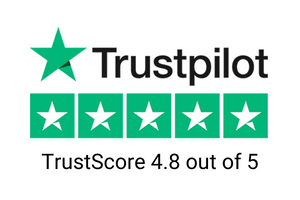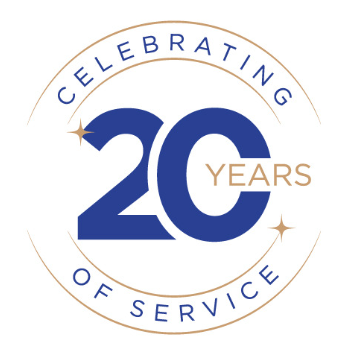How to Save Money: Proven Ways to Build Your Bank Account
Saving money consistently allows you to achieve important financial goals, gain more financial security, and have peace of mind. However, saving is easier said than done when you have many competing expenses each month. Utilizing strategic money-saving techniques takes some effort but pays off tremendously in the long run.
This comprehensive guide provides 25 practical and proven ways to start saving more money each month. Implementing even a few of these savings tips can help you significantly cut unnecessary spending and accumulate funds over time.
Review Your Spending Habits
The first step to saving more money is taking a close look at where your hard-earned dollars are going each month. Many people are surprised to discover how much they spend on non-essential items when they break down their expenses.
- Analyze your monthly bank and credit card statements to categorize where every dollar was spent. Does $100 per month on coffee shops seem high? Are you spending more on online shopping than you realized? This spending review will shine a light on unnecessary costs.
- Go line-by-line through recent statements to add up expenses for categories like dining out, entertainment, clothing, travel, hobbies, and more. Look for patterns in your spending that reveal opportunities to scale back.
- Check to see if you are still using subscriptions and memberships that bill monthly. Music and video streaming services, app subscriptions, gym memberships, and subscription boxes tend to renew automatically even if you've stopped using them. Cancel anything you don't need.
- Tracking your spending consistently is key to identifying waste and making beneficial changes to your spending habits. Use money management apps or spreadsheets to easily monitor expenses.
- Consider opening a separate savings account at an FDIC-insured bank or credit union to make it easier to automate transfers into your savings each month.
Create a Budget
A budget is essential for managing your income and expenses wisely. By accounting for every dollar you earn and spend, you can align your spending with your savings goals.
- Make a zero-based budget where your total income minus expenses equals zero. This allows you to give every dollar a purpose rather than wondering where your money went.
- Budget categories typically include housing, transportation, food, utilities, debt payments, entertainment, clothing, and more. Don't forget to include savings as a line item in your budget.
- Be realistic when budgeting for flexible categories like dining out and hobbies. Underestimating leads to going over budget.
- Use free budgeting apps like Mint or EveryDollar to automatically connect your accounts, categorize transactions, and track your spending versus your budget.
- Review your budget regularly and make changes if needed. Your goals and income fluctuate so your budget should adapt over time.
- Involve family members in the budgeting process for transparency and making joint financial decisions. Communicate regularly about sticking to your budget.
Reduce Housing Costs
Housing is often the biggest regular expense for households. There are several ways to cut down on housing costs and direct those savings elsewhere:
- Refinance your mortgage if you can qualify for a lower interest rate. This can potentially save you hundreds of dollars per month.
- Review your home insurance policy and shop around for more competitive rates. Consider increasing your deductible as well.
- Seal any air leaks around windows, doors, electrical outlets, and elsewhere to reduce energy loss and lower utility bills.
- Install a programmable thermostat so you automatically lower the temperature when no one is home or at night.
- Replace old appliances with energy-efficient models to reduce electricity usage. Look for the Energy Star label.
- Switch out incandescent light bulbs for LED bulbs that use at least 75% less energy and last longer.
- Insulate your attic, walls, water heater, and exposed pipes to improve efficiency.
- Unplug electronics when not in use to avoid drawing phantom energy load.
Lower Transportation Expenses
Transportation costs including car payments, insurance, gas, and maintenance can drain your budget. Use these tips to reduce your spending:
- Compare car insurance rates at least annually. Loyalty often doesn't pay off so shop around for better deals.
- Consider dropping comprehensive and collision coverage on older cars worth less than 10 times the premium.
- Increase your deductible amount to lower your car insurance premiums. Going from $200 to $500 can save 15% or more.
- Make sure you're receiving all the discounts you're eligible for like good driver, good student, and defensive driving.
- Try to take public transportation, walk, bike, or carpool when possible rather than driving yourself and paying for gas/parking.
- Ensure your tires are properly inflated to improve your gas mileage. Remove any heavy items from your trunk as well.
- Avoid aggressive driving behaviors like speeding, rapid acceleration, and hard braking which waste gas and cause more repairs.
Cut Down on Food Costs
Groceries, dining out, and beverages can easily consume a large portion of your budget. Try these tips to trim your food spending:
- Plan out your meals for the week ahead of time and make a detailed grocery list to avoid impulse purchases. Buying ingredients for planned meals can save money compared to dining out.
- Be realistic about how much you'll actually use to avoid food spoilage and waste. Freeze, preserve, or repurpose leftovers.
- Compare prices and buy store brands rather than more expensive national brands. Quality is often comparable while prices are lower.
- Clip coupons from the newspaper, apps, and loyalty programs to save on items you were already planning to buy. Don't let coupons lead to splurges.
- Buy meat in bulk when it's on sale, portion it out, and freeze extra to save compared to buying at regular price weekly.
- Stock up on shelf-stable items when they are on sale or you have a coupon for additional savings.
- Limit dining at restaurants which is significantly pricier than cooking at home. Going out 1-2 times per month can still satisfy the craving.
Reduce Entertainment Expenses
It's easy to get in the habit of paying for entertainment subscriptions and activities without considering the cost. Try these suggestions to trim your entertainment spending:
- Take advantage of free streaming entertainment options like YouTube, Crackle, Kanopy, Hoopla, and free trials for premium services.
- Borrow books, movies, music, and magazines for free from your local library rather than paying for them new.
- Research free or low-cost local events like festivals, museums with free admission days, outdoor concerts, etc.
- Split costs by going to matinee movies, happy hours, booking group rates, or buying bundled tickets.
- Instead of expensive cable TV packages, look into more affordable live TV streaming services starting around $20-35 per month.
- Limit paid streaming services to 1-2 per month and rotate them rather than paying for everything at once.
- Rent equipment for sports, hobbies, and DIY projects rather than buying everything new.
Shop Smart
It's easy to overspend when shopping if you don't go in with a plan. Use these tips to shop smart:
- Make a list of exactly what you need before going to the store and stick to it. Avoid browsing aisles or you'll end up with impulse purchases.
- If you see something you want but don't need, wait 24 hours before deciding to purchase it. Chances are the desire will pass.
- Right before checking out online, search for coupon codes and cashback offers to save extra money.
- Avoid convenience stores and fill up gas at grocery stores or warehouse clubs to save 10-20 cents per gallon.
- Buy generic medications rather than name-brand equivalents. Review your insurance formulary for the lowest copay tiers.
- Shop at thrift stores, consignment shops, or Facebook Marketplace for lightly used items at a fraction of retail prices.
- Unsubscribe from brand emails that contain promotions and sales which encourage spending.
Use Cash-Back Apps
Cash-back apps allow you to earn rewards on top of the savings from cutting expenses. Set it up once and then earn automatically:
- Link debit and credit cards to apps like Rakuten, Dosh, and Drop to earn cash back at hundreds of stores.
- Activate offers within each app for additional percentage cash back at specific retailers.
- Get cash back for online purchases by using linked cards or activating browser extensions.
- Redeem your accrued rewards whenever you want via PayPal, check, or gift cards. Some apps have minimums to cash out.
- Certain credit cards offer bonus categories of extra cashback rewards to maximize your savings.
- Remember to pay credit card balances in full each month to avoid interest and fees that negate rewards.
- Note that using these apps means sharing your purchase data and personal information.
Automate Your Savings
One of the most effective ways to save money is by making it automatic every month.
- Set up recurring automatic transfers from your checking account to your savings account on payday or monthly.
- Even small amounts like $25 or $50 can add up over time without much effort.
- Have your employer direct deposit a portion of each paycheck straight into your savings account.
- Link savings apps like Digit or Qapital to your checking account and let them transfer small amounts to savings periodically.
- Schedule automatic increases to your retirement account contributions to steadily save more each year.
- Automating transfers helps combat the temptation to spend extra money in your checking account.
- Building up your emergency fund and reaching goals faster is easy when contributions happen in the background.
Pay Down High-Interest Debt
Reducing debt payments frees up cash flow that can be redirected into savings and investments.
- Make a list of all debts by interest rate from highest to lowest. This is known as the debt avalanche method.
- Pay the minimum on all debts except the one with the highest interest rate. Put as much extra money as possible toward paying off that first debt.
- Once that's paid off, roll that amount into the next highest-interest debt, and so on. This snowball effect helps pay off debts faster.
- Focus on high-interest credit cards, personal loans, and certain student loans. Pay off 19% credit cards before 4% auto loans.
- Consider consolidating multiple high-interest debts into a lower fixed personal loan to reduce interest costs.
- Avoid taking on new consumer debt during the paydown process. Stick to a budget that focuses on needs rather than wants.
Invest Your Money
Once you've paid off high-interest debt and built up emergency savings, investing extra money can generate higher returns long-term than keeping it in savings accounts.
- Take full advantage of employer retirement account matching. This is free money that can accumulate substantially over time.
- Open a Roth IRA if you meet income eligibility requirements and maximize contributions of $6,000 per year if possible.
- Choose low-fee mutual funds, ETFs, and index funds that provide broad market exposure and long-term growth potential.
- Work with a fiduciary financial advisor to develop a personalized investment strategy based on your goals, time horizon, and risk tolerance.
- Utilize a retirement calculator to estimate if you're saving enough annually to meet your retirement goals.
- Understand your time horizon, ability to withstand risk, and need for liquidity before investing so you pick appropriate assets.
Reassess Insurance Policies
Reviewing your insurance coverage can uncover opportunities to get better rates and optimize policies to fit your current needs.
- Shop around for competitive rates on auto, home, life, disability, and health insurance. Don't let policies auto-renew.
- Raise deductibles on auto and homeowners insurance to lower premiums, but keep deductibles accessible in your emergency fund.
- Drop comprehensive and collision coverage from older cars worth less than 10 times the annual premium cost.
- Bundle home and auto insurance with the same provider for multi-policy discounts.
- Take advantage of discounts like safe driver, good student, paperless billing, anti-theft devices, and more.
- Consider term life insurance for affordability and optimize face value to cover debts and living expenses.
- Review Medicare Supplement coverage options thoroughly around age 65 to pick optimal plans and savings.
Cancel Unused Subscriptions
It's easy to overlook unused subscription charges that quietly deducted monthly or annually. Minimize this wasted spend:
- Comb through credit card and bank statements to identify recurring subscriptions.
- Cancel gym memberships, streaming services, subscription boxes, newsletters, software, apps, and anything else you don't use.
- When signing up for free trials, note the renewal date on your calendar to cancel before you get charged.
- Turn off auto-renewal whenever you do subscribe to something to avoid surprise charges down the road.
- For subscriptions you share like Hulu or Amazon Prime, confirm with others before canceling.
- Keep only 1-2 paid streaming subscriptions at once and rotate them to access more content for less.
- Downgrade software that offers tiered pricing to a basic or free version.
Avoid Fees and Penalties
Watch out for avoidable fees and penalties that unnecessarily drain your account balance:
- Choose free checking and savings accounts to avoid costly monthly maintenance fees. Look for ways to waive fees.
- Opt into autopay and paperless statements which often wave service fees on loans, credit cards, utilities, etc.
- Pay your credit card balances in full each month to avoid interest charges, late fees, and lowered credit scores.
- Use HSAs and FSAs to get tax deductions on eligible health expenses rather than paying with after-tax income.
- Watch out for overdraft fees and consider opting out of overdraft coverage if you tend to overdraw frequently.
- Avoid early withdrawal penalties on CDs by staggering maturity dates or choosing no-penalty CDs.
- Review all the fees associated with loans and financial products to select options with lower costs.
Establish Multiple Savings Goals
Having separate savings buckets for different financial goals can make it easier to budget, track progress, and accumulate funds.
- Set specific savings targets for an emergency fund, vehicle purchase, vacation, home down payment, holidays, etc.
- Calculate how much you need to save each week or month to reach your various goals by specific target dates.
- Use a separate high-yield savings account or CDs for different savings goals to divide funds.
- Automate transfers from checking to the various savings accounts to make contributing hands-off.
- Use charts or apps to visually track progress toward each savings goal and keep motivated.
- Once one goal is funded, redirect the amount you were saving toward the next goal.
- Reward yourself along the way for achieving smaller milestones to stay encouraged.
Try a Spending Freeze
Temporarily stopping all non-essential spending can reveal problem areas and build savings quickly.
- Halt dining out, online shopping, discretionary purchases, and entertainment expenses for 1-2 months.
- Avoid stores where you tend to overspend. Leave credit cards at home and only carry cash for necessities.
- Find free recreation like hiking, bike rides, yard games, and movie nights. Use resources you already own.
- Cook at home and eat leftovers. Search for recipes to use items you have on hand.
- Track expenses during the freeze period to see where you were bleeding money before.
- Put all money saved from the freeze directly into your savings account before you're tempted to spend it.
- Make lifestyle adjustments coming out of the freeze to maintain your newfound savings habits.
Maintain Your Possessions
Taking care of the items you already own saves you money by prolonging their usable life.
- Follow recommended schedules for servicing your vehicle, HVAC system, appliances, etc. Timely repairs prevent bigger issues.
- Make minor repairs immediately before small problems turn into expensive replacements.
- Properly clean and store items to prevent deterioration. Keep electronics away from heat.
- Sell or donate unwanted clothes, furniture, electronics, and household items rather than throwing them away.
- Mend and repurpose old items for continued use. Turn outdated decor into DIY projects.
- Use items fully before replacing them. Run appliances into the ground over years of use.
- Invest in quality items built to last through years of frequent use rather than buying disposable or flimsy.
Reward Yourself for Saving
Attaching small rewards to reaching savings milestones can positively reinforce good financial behaviors.
- Identify rewards that specifically motivate you like dining out, gadgets, trips, spa services, etc.
- Set milestone amounts for your savings goals to earn specific rewards along the journey.
- Make rewards proportionate to the goal you achieved, like a weekend getaway after saving for a big vacation.
- Choose inexpensive rewards like a fancy coffee, movie tickets, or monthly subscription for smaller goals.
- Wait to redeem the reward until after you've reached the savings amount to maintain motivation.
- Practice delayed gratification by resisting the temptation to splurge until you've earned a predetermined reward.
- Consider experiences over material things which provide lasting memories and enjoyment.
Track Your Progress
Monitoring your savings and spending patterns helps optimize your efforts over time.
- Review account balances and budget adherence at least monthly to spot issues and opportunities.
- Identify categories where you consistently overspend so you can create a plan to cut back.
- Notice months when you save more successfully and apply similar strategies going forward.
- Measure your savings rate as a percentage of income monthly and aim to increase it gradually.
- Use charts or calculators to update your progress toward each savings goal and adjust contribution amounts if needed.
- Share your wins and lessons learned with family or friends for added accountability and encouragement.
- Revisit your budget and financial priorities periodically as circumstances change.
Utilize Cash-Back Credit Cards
When used responsibly, credit cards that offer cash-back rewards can amplify your savings:
- Focus on cards that offer high cashback rates on frequent purchases like groceries, dining out, gas, travel, etc.
- Optimize rewards by spending strategically in bonus categories each quarter.
- Check your rewards balance frequently and redeem for statement credits or bank deposits.
- Pay off balances in full each month to avoid accumulating interest charges that offset rewards.
- Set up automatic payments to ensure you never miss a payment due date.
- Limit cash back chasing on discretionary purchases you wouldn’t otherwise make. Don’t spend just to earn.
- See if you qualify for credit card signup bonuses when you open a new account responsibly.
Lower Your Interest Payments
Reducing interest rates on debts frees up cash flow to direct into savings and investments.
- Consolidate multiple high-interest credit cards into a lower-fixed personal loan or balance transfer card.
- Refinance adjustable student loans or auto loans to lock in lower fixed rates. Check rates every 6 months.
- Pay more than the minimum payment on loans whenever possible to reduce the interest paid over time.
- Review credit reports and scores to ensure you qualify for the best possible refinance rates.
- Avoid racking up new credit card debt during the refinancing and paydown process. Live below your means.
- Contact lenders/creditors directly to request lower rates based on your history with them. Negotiate fees too.
- Consider debt avalanche and snowball methods to pay debts with the highest interest rates first.
Save Your Tax Refund
Instead of spending tax refund checks, make that money work for your future:
- Have your refund directly deposited into your savings or investment account.
- Before filing, decide what specific savings goals or debts to put the refund towards.
- View the refund as a special savings deposit rather than a spending windfall.
- If you're on baby step 1, save refunds to build up a starter emergency fund of $1000.
- Getting a large refund means your withholding is too high. Adjust it using a new W-4 to increase take-home pay.
- Smaller refunds spread through your paycheck let you save and invest consistently all year.
Adjust Your Tax Withholdings
Getting a big tax refund means you overpaid taxes throughout the year. Adjust your withholding to access more of your paycheck:
- Use the IRS tax withholding estimator to complete a new W-4 that lowers your withholding.
- Claim the proper number of allowances based on your tax situation. Allowances reduce withholding.
- Owe a small amount rather than get a big refund. The government gave you an interest-free loan!
- Invest the extra money in your paycheck instead of waiting to get it as a tax refund.
- If you are self-employed, pay quarterly estimated taxes to avoid underpayment penalties. Properly account for income and deductions.
- Work with a tax professional to understand your optimal withholding and estimated payments.
Learn to DIY
Doing repairs and projects yourself saves on labor costs. With a little research, many tasks are manageable for a handy homeowner.
- Watch online video tutorials to learn skills for home, auto, and appliance repairs.
- Invest in a basic toolkit and add more specialized tools as needed for frequent projects.
- Compile a list of family, friends, or neighbors with experience willing to teach or assist you.
- Tackle cosmetic upgrades like painting, trim work, and updating fixtures, to renew your living space on a budget.
- Fix minor issues early before they escalate into costly replacements.
- Compare the cost of materials to the quote for hiring a handyman or contractor. DIY can save hundreds.
- Start with small, straightforward repairs to build confidence before attempting more complex DIY projects.
Negotiate Better Rates
Don't be afraid to negotiate for lower rates and fees from service providers. A few key tactics:
- Research competitors' rates and promotional offers to have comparable pricing to reference.
- Be prepared to change providers if a company won't match a competitor's lower price.
- Call customer service and explain you've been a loyal customer and ask politely for a reduced rate.
- If negotiating a bill, offer immediate payment in exchange for the lower amount.
- Highlight ways you can bring the company additional business when requesting a discount.
- Ask for the retention department which is authorized to offer promotional pricing to keep customers.
- Remain persistent yet polite. Ask to speak to a supervisor if needed to get approval for a discount.
Now that you’re armed with 25 smart ways to save money each month, it’s time to put them into action! Start by reviewing your recent spending, identifying priority goals, and implementing even small changes today like planning meals and automating transfers into savings.
Consistently monitoring your habits and progress will help ingrain beneficial financial behaviors over time. Sticking to your savings commitment gets easier with practice as frugality becomes more natural. If you ever find your motivation waning, re-calibrate your system to get back on track.
Saving money takes some work upfront, but you’ll be glad you made the effort as your account balances grow and you gain confidence in your financial management abilities. Now go grab your bank statements and put these savings hacks into motion!
Reduce Your Credit Card Debt By Up to Half

BBB Reviews | 4.9/5.0 Rating










 Do Not Sell My Personal Information
Do Not Sell My Personal Information